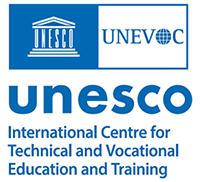
The UNESCO-UNEVOC International Centre: Who We Are | What We Do | Working With Us | Get in Touch
The UNEVOC Network: Learn About the Network | UNEVOC Network Directory
For Members: UNEVOC Centre Dashboard
Thematic Areas: Inclusion and Youth | Digital Transformation | Private Sector Engagement | SDGs and Greening TVET
Our Key Programmes & Projects: BILT: Bridging Innovation and Learning in TVET | Building TVET resilience | TVET Leadership Programme | WYSD: World Youth Skills Day
Past Activities: COVID-19 response | i-hubs project | TVET Global Forums | Virtual Conferences | YEM Knowledge Portal
Our Services & Resources: Publications | TVET Forum | TVET Country Profiles | TVETipedia Glossary | Innovative and Promising Practices | Toolkits for TVET Providers | Entrepreneurial Learning Guide
Events: Major TVET Events | UNEVOC Network News
Augmented Reality is the technology that allows virtual world objects to be combined into the real world and appear in the same space in real-time.
 Source:
Source:Augmented reality superimposes sounds, videos, and graphics onto an existing environment. It uses four main components to superimpose images on current environments: cameras and sensors, processing, projection, and reflection.
 Source:
Source:Augmented Reality in education involves the addition of computer-generated information to a real-world environment with a view to creating a more interactive learning experience enhanced using multiple sensory modalities such as sound, touch, movement or smell.